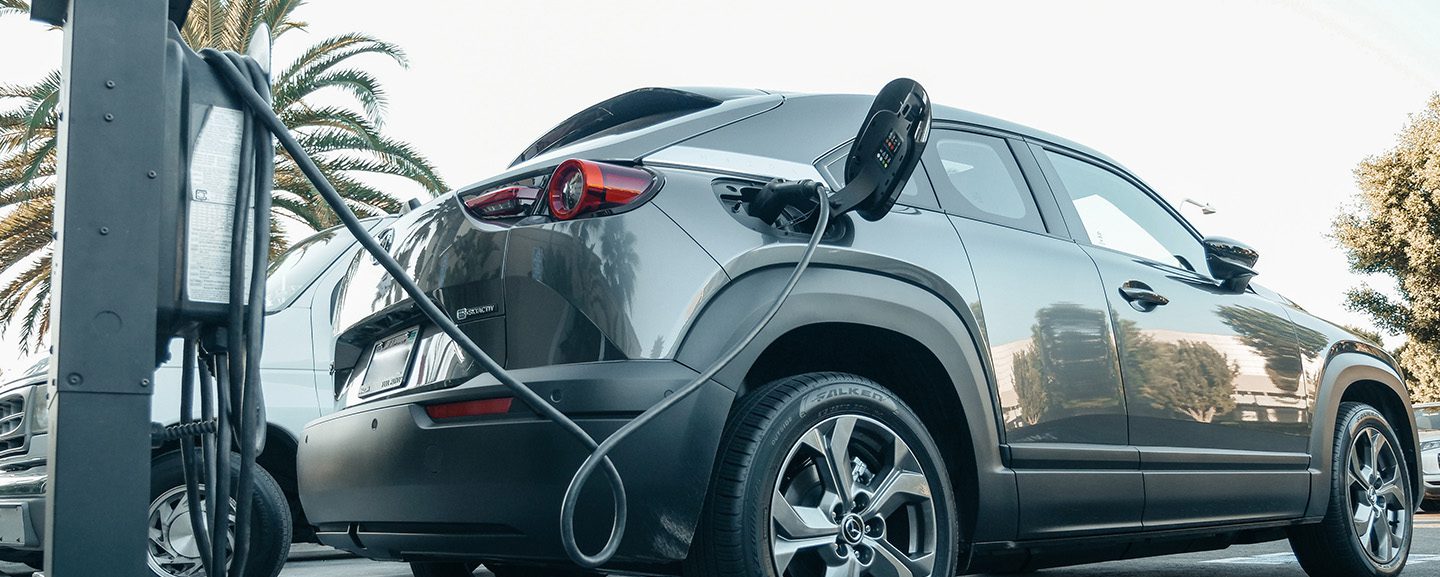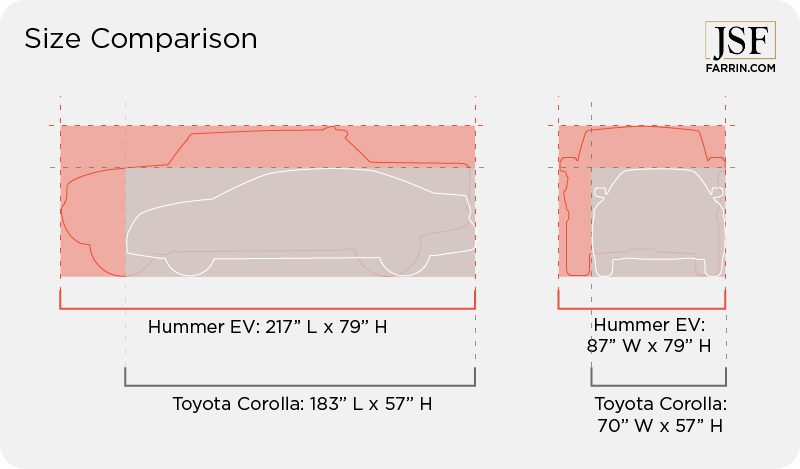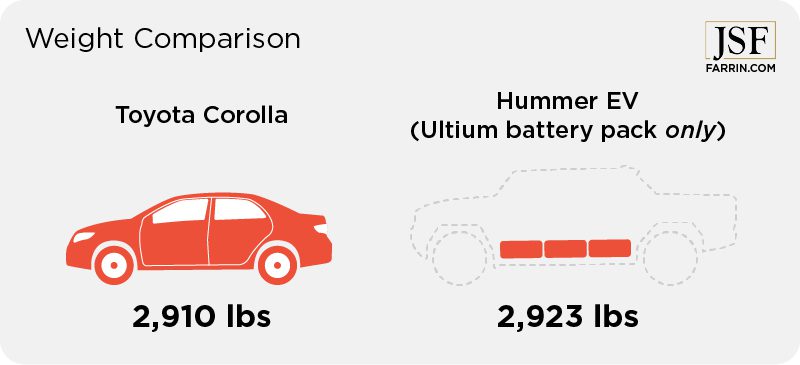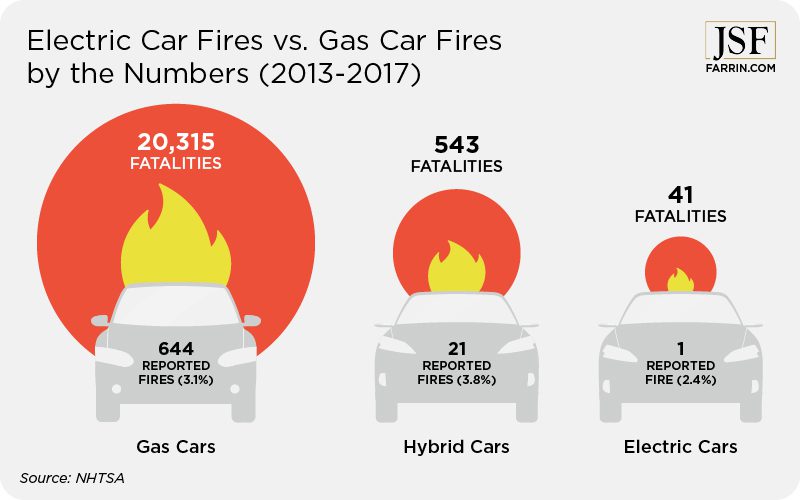Electric cars, by and large, pass the same safety tests and meet the same crash standards as gasoline-powered cars – cars are cars, right? But three key differences set electric vehicles (EVs) apart:
- what causes some to crash at higher rates
- the likelihood of injuries for those inside the car and
- the risks faced in the aftermath of a crash
All three of these differences can have an effect when you’re seeking compensation after you’ve been injured by another in an accident involving an electric vehicle. As a personal injury attorney, my goal is to help you recover maximum compensation, so let’s discuss each difference and why they may matter to you.
Difference #1: Electric Vehicles Weigh More, Which Makes Them a Bit Safer…Primarily for Their Occupants
Electric cars are simply much heavier than those with internal combustion engines. How much heavier? And what difference does it make?
The recently-introduced Hummer EV tips the scale at over 9,000 lbs. For comparison, a base model 2022 Toyota Corolla weighs 2,910 lbs. The Hummer EV is so heavy the Insurance Institute for Highway Safety (IIHS) had to review its crash test equipment to ensure it could handle vehicles over 9,000 lbs.
It’s not just the Hummer EV. Ford’s F150 Lightning weighs from 2,000 – 3,000 lbs. more than a gas-powered version. Volvo’s XC40 EV weighs about a third more than its gas-powered counterpart.
The lithium-ion batteries that power most electric cars are heavy, and that generally makes their weight skyrocket by comparison to gas cars. The Hummer EV’s Ultium battery pack weighs in at 2,923 lbs!
On a positive note, because there is no gasoline engine mounted in front of the passenger compartment, designers can create a more effective crumple zone. In a crash, this crumple zone can absorb inertia, sparing passengers and even sometimes other vehicles from some of the impact. This has a noticeable effect on crash safety for occupants in an EV.
But it’s important to remember that the battery pack in an electric vehicle is typically mounted low. High weight plus a low center of gravity equals leverage in a crash. The sledgehammer weight of an EV protects its passengers, and its crumple zones may reduce some crash forces, but physics does win.
During a crash, more of the force can be transferred to the lighter vehicle and its occupants, possibly resulting in a greater chance of serious injury. Depending on the model, if you’re driving near an electric vehicle, it may be appropriate to act more as if you’re driving next to a big rig than another passenger car.
Difference #2: Some Electric Vehicle Drivers Are More Likely to Crash
According to a study by Swiss insurer AXA, some electric vehicles are more prone to being crashed. Overall, the claims rate for electric cars is on the same level as conventional cars. However, a deeper dive reveals some important differences related to driver error and engine power in an EV.
The study found that for smaller electric cars, the claims rate was about 10% less than for conventional cars. Meanwhile, for larger, more powerful and luxury electric vehicles and SUVs, the claims rate was about 40% higher. Why? The sheer speed with which larger EVs accelerate is just different, and that’s apparently what’s catching drivers off guard.
According to AXA, the higher likelihood of crashes is due to the extreme power of these larger electric vehicles. Drivers coming from traditional, gas-powered vehicles are conditioned to how combustion engines produce power. Electric cars are a different animal and provide instant torque.
The Electric Vehicle: A Silent Threat?
Being aware around EVs isn’t just a requirement for drivers. The silent nature of electric cars can also be a problem for pedestrians and vulnerable cyclists. When you’re walking through a parking lot, for example, you’re used to hearing engines running before a car reverses from a space. Without that sound cue, you may be caught unaware by a negligent driver.
Since 2019, European Union law has required all new electric vehicles to be fitted with an acoustic vehicle alerting system (AVAS). Is legislation like that on the horizon for the United States?
Difference #3: Electric Vehicle Fire Risk
It seems like there are plenty of news stories about electric vehicles catching fire in crashes.
Despite the headlines, EVs pose a similar risk of fire to traditional combustion engine cars. “Combustion” is right there in the name, after all. However, data from the National Highway Traffic Safety Administration (NHTSA) suggests that, when an electric vehicle does catch fire, it’s more dangerous than gas vehicles.
According to the report, out of 20,315 gasoline car fatalities from 2013-2017, there were 644 reported fires; for hybrids, 543 fatalities and 21 fires; and for electric cars, 41 fatal crashes and one fire.
The Greater Danger of Electric Car Fires
Regardless of how often electric car fires occur, the high-voltage batteries in electric vehicles pose additional problems for firefighters and those caught in a fire. Lithium-ion batteries have very high energy density to give electric vehicles the range to compete with their gas-powered siblings.
Simply put, battery fires burn hotter and longer than gasoline fires. Firefighters used more than 30,000 gallons of water to extinguish one crashed EV fire – several times what’s required for a conventional car. Furthermore, an energy-packed battery pack could repeatedly reignite. In one case, a fire was extinguished and the car towed to a lot – where the battery caught fire four more times. There are reports of battery fires occurring weeks after they were first extinguished.
If you’re involved in a crash with an EV, if you’re able, get out and get away from it. Don’t take any chances.
Call an Attorney if You Were Injured by an EV Driver
The bottom line is that powerful EVs are probably easier to crash, but generally at least as safe as traditional vehicles. Still, there are unique dangers in crashes involving one and pitfalls that can occur when seeking compensation for one with the insurance company.
We have the knowledge, experience, and resources to fight on your behalf and help you seek the compensation you may deserve. We’ve helped more than 73,000 clients recover more than $2 billion in total compensation since 1997. And counting.1
If you’ve been hurt in a crash with an electric car, contact our car accident attorneys right now at 1-866-900-7078 or contact us online for a free case evaluation.









